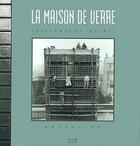Résumé:
In 1890, the patron of the arts Henri Van Cutsem (1839-1904) inherited a townhouse in the neoclassical style at 16 avenue des Arts in Sint-Josse-ten-Noode, a borough neighbouring the historical city centre of Brussels. To show off his art collections to best effect, Van Cutsem entrusted the... Voir plus
In 1890, the patron of the arts Henri Van Cutsem (1839-1904) inherited a townhouse in the neoclassical style at 16 avenue des Arts in Sint-Josse-ten-Noode, a borough neighbouring the historical city centre of Brussels. To show off his art collections to best effect, Van Cutsem entrusted the works to extend his home and convert the stables and annexes to a young and as yet unknown architect:
Victor Horta. Between 1890 and 1893 the latter designed two galleries topped with glass roofs with metal supports and a new facade giving onto rue de la Charité.
This enlarged Hôtel Charlier provides an early example of the innovations that would later become distinctive of the work of the master of Art Nouveau: the fluidity and transparency of the interior spaces, the use and affirmation of visible metal in a private home, fruit at the base of walls to lend an organic illusion, etc.
In 1928, the townhouse became known as the "Charlier Museum" in memory of the sculptor Guillaume Charlier (1854-1925), Van Cutsem's universal legatee, who donated the house and its art collections to the borough of Sint-Josse-ten-Noorde. In 1993 the museum was listed as a historical monument by the Brussels-Capital Region.
Donner votre avis















